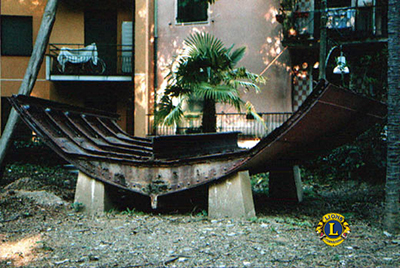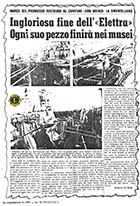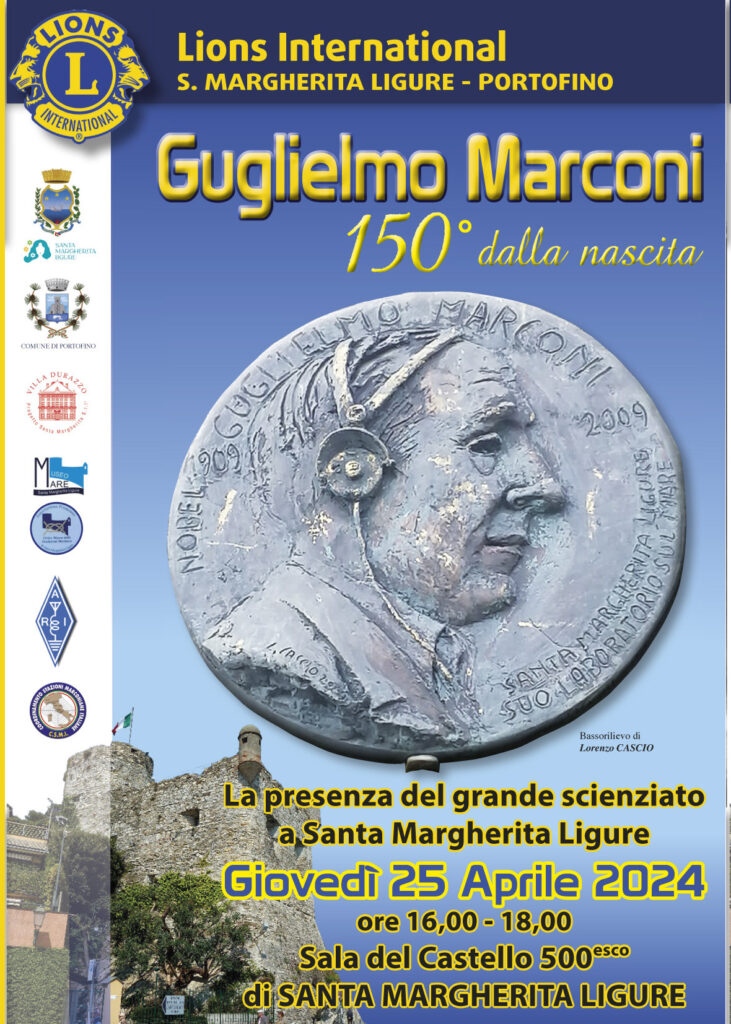GUGLIELMO MARCONI – (1874 – 1937)H
e stayed for a long time in the Gulf Tigullio, also called Gulf Marconi (in his honor), where he was able to carry out numerous important experiments in the field of communication. It was from his ideas that the first great means of mass communication would develop: radio. Marc
oni in Santa Margherita Ligure used to split between his panfilo Elettra and the Grand Hotel Miramare. There, from 1931 to 1936, he always stayed in room number 105.
Electra ship
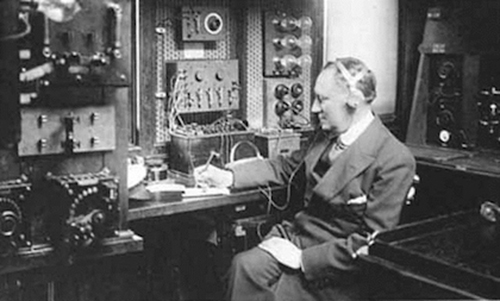
Summary of Guglielmo Marconi’s activities in the Gulf of Tigulli
o (information from the website A.R.I sez. Rapallo -IQ1BK)
May1
931
The yacht ‘Electra’ arrives in St. Margaret and moors in front of the Laurin hotel. G.m. begins the microwave experiment between the yacht (which remains on a cruise in the Gulf of Tigullio) and the land.
October
1931
Guglielmo Marconi and his collaborator Ing. Mathieu, at villa Repellini (near S. Margherita, on the rolling stock for Portofino) demonstrate the characteristics of microwaves with radio experiments between Santa Margherita Ligure and Sestri Levante (18 km): they use wavelengths of 50 cm and equipment built by the Marconi Workshops in Genoa. The transmissions are received with great clarity and considerable power.
November
1931
– Guglielmo Marconi broadcasts waves of 10, 20, 30, 40 cm on radio from Villa Repellini to the Villa Gualino on the Sestri Levante peninsula (on the Semaforico-Mesco Mount).- G
uglielmo Marconi presents to the technicians of the Marconi company the results of the experiences he is about leading into the Gulf of Tigullio.Guglielmo Marconi, Admiral Pession, the Ing. Gorio and the Ing. Mathieu visits the Podesta of St. Margaret with whom they then leave for Levanto where other important experiments are underway.
– The Devoto Podesta sends to Guglielmo Marconi, in Rome, the following telegram: ‘On behalf of Santa Margherita Ligure proud to have been chosen by the E.V. as a field of the most important new experiences with ultracorte waves, I express a sense of admiration and deep gratitude. Ossequie.
Guglielmo Marconi. Responds: ‘Thank you very much S.V. et citizenship S. Margherita Ligure for courteous expressions addressed to me with his telegram twenty current.’
April
1932
Guglielmo Marconi is back in Tigullio to test the equipment developed in the electra laboratory in the autumn of 1931 and demonstrate the possibility of performing radio conversations in both directions using the same wavelength. There are senior officers, technicians and experts. the transmission takes place between S. Margherita (Villa Repellini) and Sestri Levant (Villa Gualino) and is judged perfectly successful, although the presence of the English aircraft carrier ‘Clorious’ creates some difficulties for electrical interference. The ship’s commander, K.Purvis, apologises for the inconvenience, and on the 16th he will invite the scientist and the con-committee on board for a breakfast.
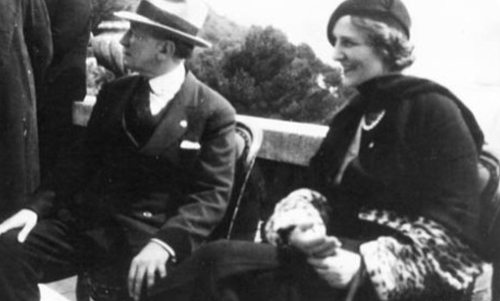
July
1932
The yacht ‘Elettra‘ sails from Santa Margherita to Sestri Levante where it will stop for a few days for experiments: it will then continue to Fiumicino and then return to Santa Margherita Ligure.
July
1933
Guglielmo Marconi arrives in St. Margherita Ligure to continue the experimentation on the very short waves. The Electra is moored in front of the Grand Hotel Miramare on whose terrace the equipment is installed to carry out the experimentation of short-wave transmissions, continuation of those made two years before.
August
1933
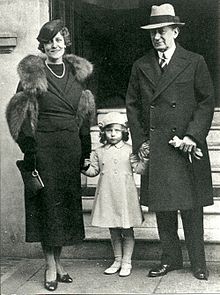
Between 2 and 8 August Guglielmo Marconi conducts a trial between the Grand Hotel Miramare of Santa Margherita Liguria and the Electra in navigation. The scientist manages to send telegraph and radio signals at a distance of 150 km with waves of 55 and 60 cm, from a height of 38 meters on the sea. In Sa
nta Margherita, the equipment is dismantled, which, under the watchful eye of the Ing. Mathieu, they are packed and shipped to Rocca di Papa donde will continue to Sardinia to be placed on Mount Figari.
March
1934
Return to the Miramare hotel of Santa Margherita Ligure l’Ing. Mathieu ahead of Guglielmo Marconi, whose arrival is scheduled for early June.
June
1934
Guglielmo Marconi after performing a check on the instruments installed at Sestri Levante in the Villa Gualino, reaches Santa Margherita Ligure to fine-tune the equipment on the terrace of the Grand Hotel Miramare. The research is carried out on a triangle that has for the top the yacht ‘Elettra’, the Hotel Miramare and the villa Gualino in Sestri Levante, while another connection is subsequently implemented with the station located in Sardinia.
July
1937
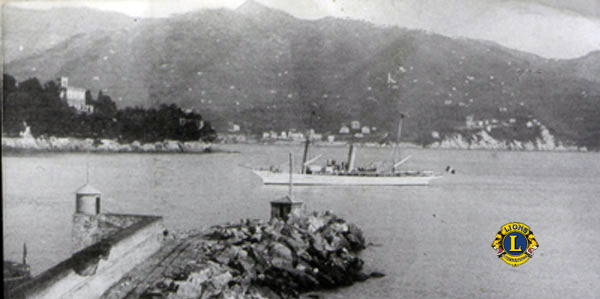
Guglielmo Marconi experiences the ‘Faro Marconi’, present technicians and officers of the Italian and English navy rather than a group of journalists. The direct radio telegraphy test takes place in the Gulf of Tigullio, through connections between the Electrician and the stations of Santa Margherita Ligure and Sestri Levante: it shows how it can guide a ship blindly in the middle of the fog or pilot it within a port avoiding obstacles, using only ultra-short radio waves. The trial continues until day 30 with waves of 63 cm. Based on these elements rests the operation of the ‘radar’.- G
uglielmo Marconi moves the radio beacon of Sestri Levant and places it at about 90 m above sea level
February
1935
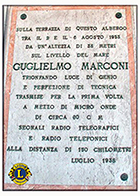
Hotel Mirama
re plaque
Guglielmo Marconi shifts the field of his research to greater altitudes and therefore sets the basis of his experiments behind RAPALLO, just above the Shrine of Montallegro. The radio-transmitting station, located within a cabin located almost on the top of Monte Rosa, at an altitude of 680 meters above sea, connects with the receiving station fixed, at a distance of more than 150 kilometers, on the declivity of Mount Burrone, about 10 km from Livorno, not far from the Sanctuary of Montenero (200 meters above sea level). The evidence aims to ascertain the possibility of transmitting a considerable amount of energy with suitable reflectors and to demonstrate that very short waves do not suffer interference from atmospheric disturbances.
July
1935
Guglielmo Marconi is back at RAPALLO: in the period July – September continues those experiments that also constitute the first embryo of television broadcasts. In particular, it is committed to completely eliminating the drawbacks of the ‘double image’ of the phenomenon of radio-waves reflection. On Monte Rosa, connected with the ‘Electra’ and Mount Burrone, the scientist carries out throughout the summer a wide series of experiments on microwaves acquiring the necessary elements for their practical implementation. A tombstone, placed immediately behind the Shrines of Montallegro, at the beginning of the trail leading to Monte Rosa, recalls those experiments- ‘FROM THIS COL TRA FEBBRAIO AND WEEK 1935 GUGLIELMO MARCONI INSO’ EXPERIMENTS THAT OPEN NEW IMMENSI HORIZONS FOR ETHER LINKS – THE CIVIC ADMINISTRATION – RADIO AMATEURS SECTION OF RAPALLO 1985‘
November
1936
Guglielmo Marconi is back in Tigullio. The yacht ‘Electra’ remains moored at the bitte of Santa Margherita Ligure until November.
On 11 and 12 November 1936, Guglielmo Marconi made a four-way radio and television conversation between the Electra anchored in Santa Margherita Ligure, New York and two airplanes flying over the latter city.
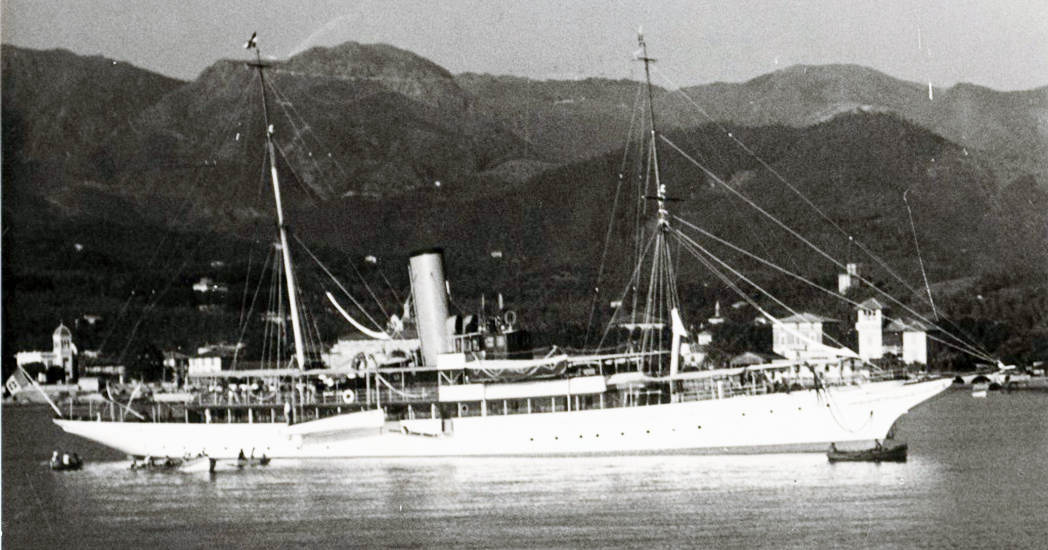
At the outbreak of the Second World War the ship Electra was transferred to the port of Trieste, until following the events that followed the armistice of Cassibile was requisitied by the Germans and armed with five machine guns, one 15mm and four 20mm in two binate turrets.
In the Kriegsmarine it was entered into service first with the acronym G-107, t
hen NA-6. The ship Electra departed Trieste on 28 December 1943 for a patrolling mission along the coast of Dalmatia. On 21 January 1944, the ship arrived in the waters of Diklo, near Zara, where the next morning it was spotted by allied fighter bombers from which it was hit. The commander, before the ship sank, chose to strand it.
